New Products
-
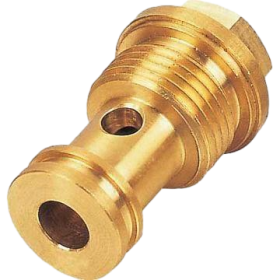
Custom Turn-Mill Combination brass parts
-
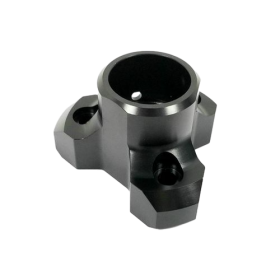
Custom Turn-Mill Combination parts
-
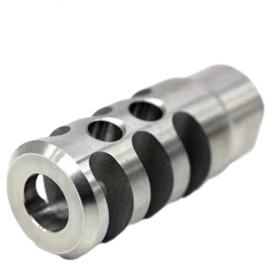
Precision CNC Turning Parts Stainless Steel shaft accessories
-
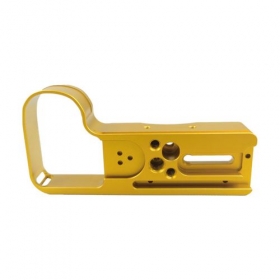
Precision CNC Custom Made Colorful Anodized Aluminum milling parts
-
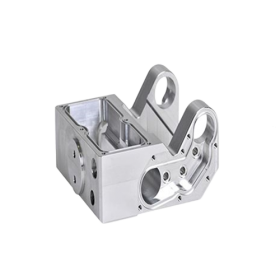
Custom CNC Milling Automated Machinery and Equipment Parts
-
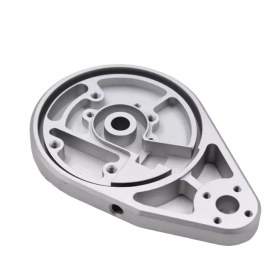
OEM/ODM Custom High Precision Metal CNC Machining/Milling/Turning Service CNC Turning Part
6061 vs. 7075 Aluminum: Differences in Properties, Strength, and Uses
In the vast realm of metal fabrication, aluminum stands out as a highly versatile and widely utilized material. Among the numerous aluminum alloys available, 6061 and 7075 are two popular choices, each with distinct properties that make them suitable for different applications. Understanding the differences between these two alloys is crucial for making informed decisions in various industries.
1. Chemical Composition: The Foundation of Strength
6061 aluminum is primarily alloyed with magnesium (Mg) and silicon (Si). The addition of magnesium and silicon imparts good corrosion resistance, workability, and weldability to the alloy. The combination of these elements also results in a relatively balanced set of mechanical properties.
On the other hand, 7075 aluminum is alloyed with zinc (Zn), magnesium, and copper (Cu). The presence of zinc as a major alloying element contributes to its high strength, making it one of the strongest aluminum alloys available. The addition of copper further enhances its strength and hardness, while magnesium helps improve its corrosion resistance and formability to some extent.
The significant difference in zinc content between these two alloys is the primary factor contributing to their distinct properties. 6061 has silicon and magnesium as the main alloying elements, while 7075 uses zinc and copper.
2. Mechanical Properties
Strength
7075 aluminum is renowned for its exceptional strength. It has a significantly higher tensile strength compared to 6061 aluminum. This makes 7075 an ideal choice for applications where high - strength materials are required to withstand heavy loads and stresses. For example, in the aerospace industry, 7075 aluminum is commonly used in the construction of aircraft wings, fuselage frames, and landing gear components. These parts need to endure extreme forces during flight, and the high strength of 7075 aluminum ensures the safety and integrity of the aircraft.
6061 aluminum, while not as strong as 7075, still offers a good balance of strength and other properties. It has sufficient strength for a wide range of applications, such as in the automotive industry for engine components, suspension parts, and structural elements. It also finds use in general - purpose applications where a combination of strength, corrosion resistance, and workability is needed.

Hardness
7075 aluminum is generally harder than 6061 aluminum. The higher hardness of 7075 is a result of its alloy composition, particularly the presence of zinc and copper. This hardness makes 7075 more resistant to wear and abrasion, which is beneficial in applications where the material is subject to mechanical stress and friction.
6061 aluminum has a moderate hardness, which allows for relatively easy machining and forming processes. It can be readily shaped into various forms using common metal - working techniques, making it a popular choice for fabricators who need to work with the material in different ways.
Ductility
Ductility refers to a material's ability to be stretched or deformed without breaking. 6061 aluminum has good ductility, which enables it to be easily bent, rolled, or drawn into different shapes. This property makes it suitable for applications that require complex forming operations, such as in the production of aluminum sheets for architectural applications or in the manufacturing of aluminum tubes for various industrial uses.
7075 aluminum, while still ductile, is less so compared to 6061. The higher strength and hardness of 7075 come at the expense of some ductility. However, it can still be formed into useful shapes through appropriate processing methods, but the forming operations may require more care and precision.
3. Corrosion Resistance
Both 6061 and 7075 aluminum alloys exhibit good corrosion resistance due to the formation of a natural oxide layer on their surfaces. However, 6061 aluminum has a reputation for slightly better corrosion resistance in certain environments. The combination of magnesium and silicon in 6061 contributes to the formation of a more stable and protective oxide layer, making it more resistant to corrosion from moisture, chemicals, and atmospheric elements.
7075 aluminum, although generally corrosion - resistant, may be more prone to corrosion in some specific conditions, especially in the presence of certain corrosive agents. To enhance its corrosion resistance, 7075 is often anodized or treated with protective coatings, especially when used in outdoor or marine applications.
4. Heat Treatment
Both 6061 and 7075 aluminum can be heat - treated to improve their mechanical properties. Heat treatment processes such as solution heat treatment and aging can significantly enhance the strength, hardness, and other properties of these alloys.
6061 aluminum responds well to heat treatment, and the heat - treated version of 6061 can achieve a good balance of strength and ductility. The heat - treatment process can be tailored to meet the specific requirements of different applications.
7075 aluminum also benefits greatly from heat treatment. In fact, it is often heat - treated to its T6 temper (solution heat - treated and artificially aged), which is the most common temper for 7075 aluminum. This temper provides the alloy with its maximum strength and hardness, making it suitable for high - stress applications.
5. Applications
Aerospace Industry
As mentioned earlier, 7075 aluminum is a staple in the aerospace industry. Its high strength - to - weight ratio makes it an ideal material for aircraft components that need to withstand extreme forces. From the structural components of the airframe to the landing gear, 7075 aluminum plays a crucial role in ensuring the safety and performance of aircraft.
6061 aluminum is also used in the aerospace industry, but more for components that require a combination of strength, corrosion resistance, and workability. For example, it may be used in interior components, non - structural parts, or in areas where the weight savings provided by 7075 are not as critical, but the ability to be easily fabricated is important.
Automotive Industry
In the automotive sector, 6061 aluminum is commonly used for engine components such as cylinder heads, pistons, and engine blocks. Its good strength, heat resistance, and machinability make it suitable for these applications. It is also used in suspension parts, body panels, and wheels, helping to reduce the overall weight of the vehicle and improve fuel efficiency.
7075 aluminum, due to its high strength, may be used in high - performance automotive applications where components need to withstand significant stress. For example, in racing cars, 7075 aluminum may be used in parts such as the chassis, connecting rods, gears, suspension components, and engine mounts to ensure maximum performance and durability.
Sporting Goods
Both 6061 and 7075 aluminum find applications in the sporting goods industry. 6061 aluminum is often used in the production of bicycles, where its combination of strength, lightweight, and corrosion resistance is beneficial. It can be used for the frame, handlebars, and wheels, providing a balance between performance and cost.
7075 aluminum is used in high - end sporting goods where strength is crucial. For example, in the production of golf club heads, tennis rackets, and high - performance fishing rods, 7075 aluminum can provide the necessary strength and stiffness to enhance the performance of these products.
Construction Industry
6061 aluminum is a popular choice in the construction industry. It is used for window frames, door frames, curtain walls, and roofing materials. Its corrosion resistance, workability, and aesthetic appeal make it a preferred material for enhancing the durability and appearance of buildings.
7075 aluminum, while not as commonly used in construction as 6061, may be used in applications where high - strength structural components are required. For example, in large - scale industrial buildings or in structures that need to withstand extreme weather conditions or heavy loads, 7075 aluminum may be used in beams, columns, and other load - bearing elements.
Conclusion: Making the Right Choice
In summary, 6061 and 7075 aluminum alloys have their own unique characteristics, strengths, and applications. the key differences are:
· 7075 provides much higher strength and hardness than 6061
· 6061 offers better corrosion resistance, weldability, machinability, and thermal conductivity
· 7075 is more expensive than 6061
Whether you are in the aerospace, automotive, sporting goods, or construction industry, understanding the differences between these two alloys can help you select the right material for your specific needs. At Bomei Precision Machining, we are well - versed in working with both 6061 and 7075 aluminum, and our team of experts can assist you in choosing the most suitable alloy for your metal fabrication projects. Contact us today to learn more about how we can meet your aluminum - based manufacturing requirements

 Evan Xiao
Evan Xiao